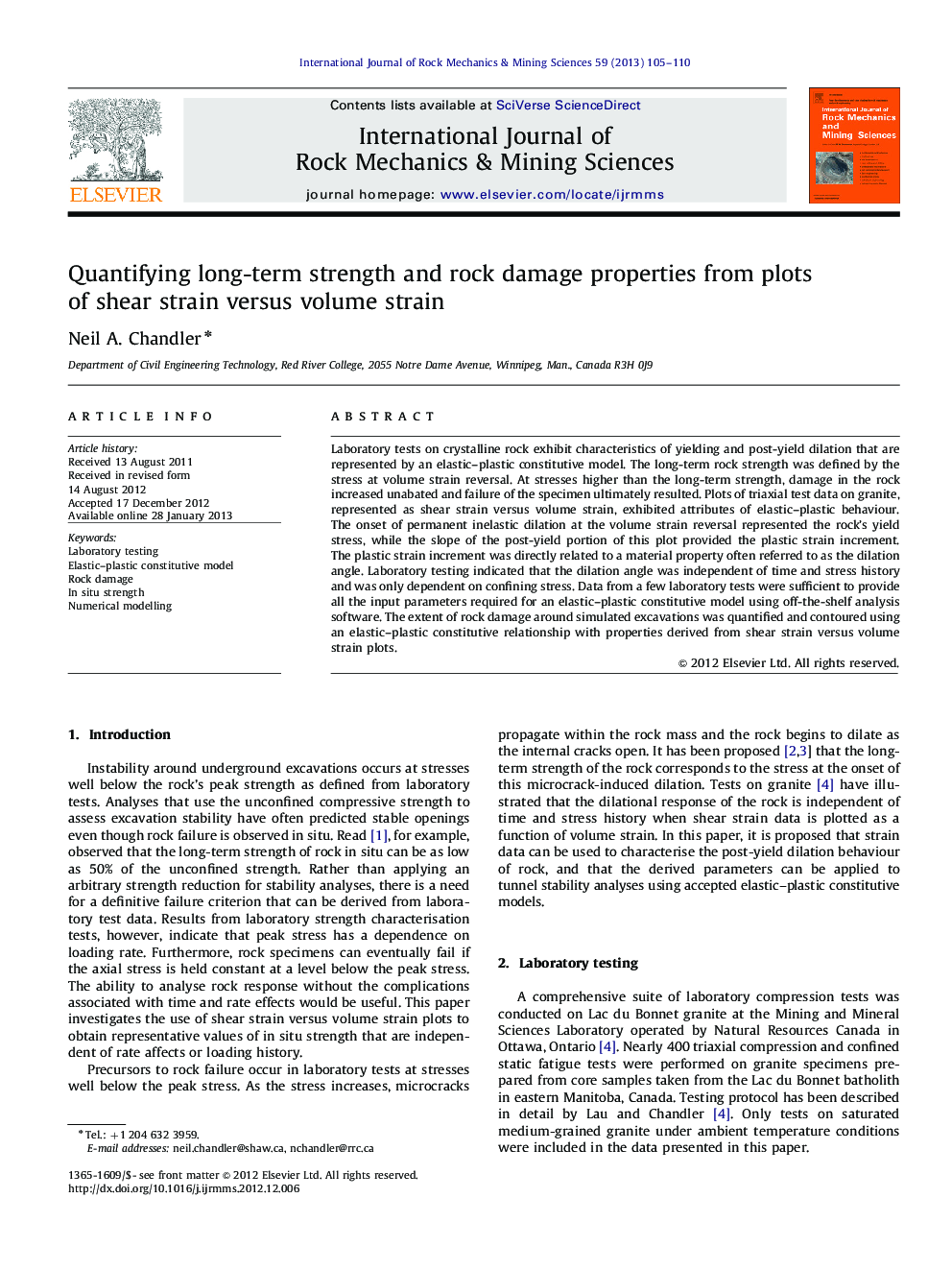| Article ID | Journal | Published Year | Pages | File Type |
|---|---|---|---|---|
| 809619 | International Journal of Rock Mechanics and Mining Sciences | 2013 | 6 Pages |
Laboratory tests on crystalline rock exhibit characteristics of yielding and post-yield dilation that are represented by an elastic–plastic constitutive model. The long-term rock strength was defined by the stress at volume strain reversal. At stresses higher than the long-term strength, damage in the rock increased unabated and failure of the specimen ultimately resulted. Plots of triaxial test data on granite, represented as shear strain versus volume strain, exhibited attributes of elastic–plastic behaviour. The onset of permanent inelastic dilation at the volume strain reversal represented the rock's yield stress, while the slope of the post-yield portion of this plot provided the plastic strain increment. The plastic strain increment was directly related to a material property often referred to as the dilation angle. Laboratory testing indicated that the dilation angle was independent of time and stress history and was only dependent on confining stress. Data from a few laboratory tests were sufficient to provide all the input parameters required for an elastic–plastic constitutive model using off-the-shelf analysis software. The extent of rock damage around simulated excavations was quantified and contoured using an elastic–plastic constitutive relationship with properties derived from shear strain versus volume strain plots.
